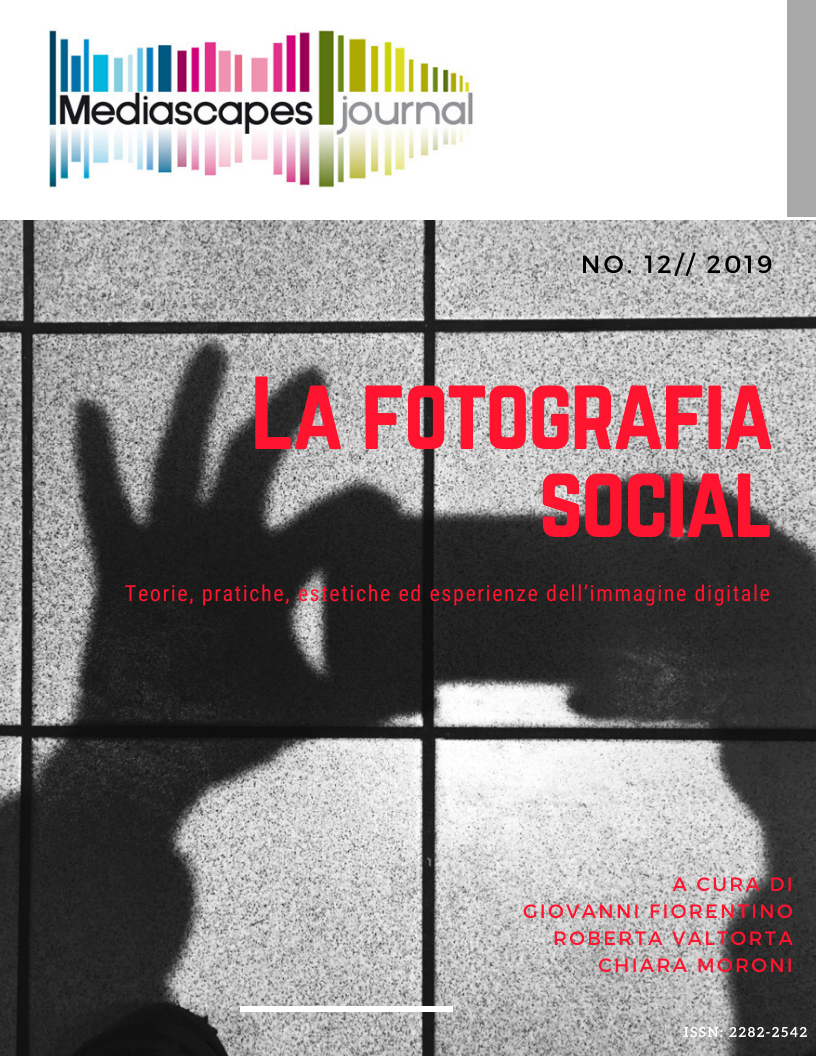La fotografia digitale e la rimediazione dell’esperienza filmica tra i post-millennials
Parole chiave:
Social Photography, Post-Millennials, Filmic ExperienceAbstract
According to Hayles (2012), digital media favor processes of co-evolution between humans and technologies, which can be summarized in the concept of technogenesis. This anthropological reconfiguration can be observed with greater clarity by studying the relationship between the young generations and the screens. The iGen (Twenge 2017) represents a privileged object of research to observe the transformation of cultural practices and processes of identity and relational construction into contemporary mediascape. Today digital photography occupies a privileged position among the most used media among young and very young people (Richtin, 2009; Bajac, 2010; Fiorentino, 2014), due to its incorporation in mobile and interconnected devices, which allow to take pictures in every situation and in every place and to circulate these images, for more or less extensive audiences, through social media. The survey we have set up aims to detect the ways in which the iGen'ers resort to the second screen, using photography to remedy (Bolter & Grusin, 1999) the filmic experience, meaning the complex of the media experience that begins before watching the film (with information search or viewing of trailers, for example) and ends later (with the formulation of judgments and comments, the discussion with other people, etc.). The research questions we have formulated can be summarized as follows: 1) for what purposes do Post-Millennials use digital photography, communicating with their personalized audiences through social networks during the filmic experience? 2) How do the uses of digital photography change during the filmic experience, depending on the context (cinema or home), the technical properties of the devices (smartphone, tablet) and the company (family, friends, etc.)? 3) Which is the privileged use of the images taken during the filmic experience and to which processes of identity and relational construction are functional? To measure these dimensions, we adopted the qualitative method of the focus group, chosen to dialogue with two groups of high school students, aged 14 to 18, based on a structured interview aimed at detecting the salient dimensions of the phenomenon, as emerged from the research questions. We will present some of the most relevant results of this work.
##submission.downloads##
Pubblicato
Come citare
Fascicolo
Sezione
Licenza
Gli autori che pubblicano su questa rivista accettano le seguenti condizioni:
- Gli autori mantengono i diritti sulla loro opera e cedono alla rivista il diritto di prima pubblicazione dell'opera, contemporaneamente licenziata sotto una Licenza Creative Commons - Attribuzione che permette ad altri di condividere l'opera indicando la paternità intellettuale e la prima pubblicazione su questa rivista.
- Gli autori possono aderire ad altri accordi di licenza non esclusiva per la distribuzione della versione dell'opera pubblicata (es. depositarla in un archivio istituzionale o pubblicarla in una monografia), a patto di indicare che la prima pubblicazione è avvenuta su questa rivista.
- Gli autori possono diffondere la loro opera online (es. in repository istituzionali o nel loro sito web) prima e durante il processo di submission, poiché può portare a scambi produttivi e aumentare le citazioni dell'opera pubblicata (Vedi The Effect of Open Access).


